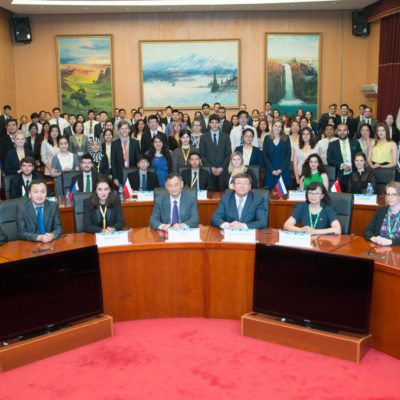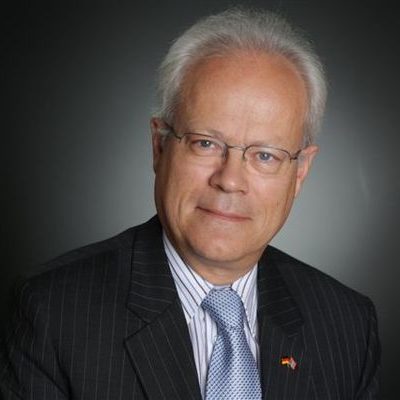Text by Patricia Senge, Photo by Heiko Seibel
Dr. Katharina Höne was a PhD student at Aberystwyth University in Wales/UK and works now as a trainer and lecturer at the non-profit foundation DiploFoundation, which was established by the governments of Malta and Switzerland.
Orange Magazine sat down with her during the sidelines of the 7th Model Asia-Europe Meeting (ASEM) attended by 150 students and young professionals focusing on diplomacy and international relations. The event is held in Ulaanbaatar in Mongolia.
What is the DiploFoundation’s work on building diplomatic skills of the youth?
Dr. Katharina Hoene: We are most interested in how the Internet and trends developing in the digital world are changing diplomacy. The organization does research and capacity building on subjects related to diplomacy. Most of the trainings are online but some are done face to face. We are trying to bring diplomats together by using the Internet and digital media. There is also the research aspect. It predominantly focuses on Internet governance, which refers to the rules and policies related to the Internet such as cyber security, and online learning. For example, we aim to understand how governments engage with their constituents using e-diplomacy.
How are the training sessions tailored for both diplomats and students?
The main focus of these training sessions is to provide skills and training for diplomats. But diplomacy is much more than the traditional diplomats, we have the civil society, other non-traditional actors and the media—all of whom are engaged in the process. For instance, if an NGO is active in education advocacy, they can attend courses on education diplomacy to understand how diplomats in that area think. And it is also interesting for diplomats to see how NGOs proceed with their work.
During the plenary session of the 7th Model ASEM, you mentioned that the future of connectivity is digital. How is that also related to the Asia-Europe connectivity?
Connectivity is very important and as we can see, there is no fixed definition of it. I do think that digital connectivity is the future of connectivity because there is so much happening in this relatively new sphere and a wide policy space can be explored for discussion. From our research, we see that topics such as cyber security are discussed very differently in Europe and Asia, meaning there could be a potential for dialogue.
When talking about digital connectivity, how is the scope defined? Does it concern the Internet exclusively or other media platforms as well?
What it actually refers to can differ. We look at it mainly in relation to the Internet. This covers the content, policy, infrastructure, as well as the impact it has on social relations and diplomacy.
How can the youth become major actors in building diplomacy, especially on social media platforms?
Youth is a very important actor. Regarding connectivity for example, the older generation who wants to tap into digital diplomacy to reach out more to the public can learn from younger people how to use social media such as Facebook, Twitter and other platforms effectively. Having grown up using these platforms, the youth knows how to craft messages to make them more viral and reach out to more people.
In your opinion, how can initiatives such as the Model ASEM help young diplomats build their skills in diplomacy?
Diplomacy is about practice, practice, practice. You cannot learn all these skills at university, you learn through practice. This ASEM Model offers the participants a fantastic opportunity to practice and to get feedback on their performance as a delegate. When they make a mistake, it is fine and they get encouragement on how to improve their delivery. I believe it is really an ideal learning environment. Coming together to participate in the whole process – trying to simulate the process and realizing how complicated it is, and learning to react quickly and effectively to arrive at an agreement – provides exactly the kind of practice that is needed to build diplomatic skills.




